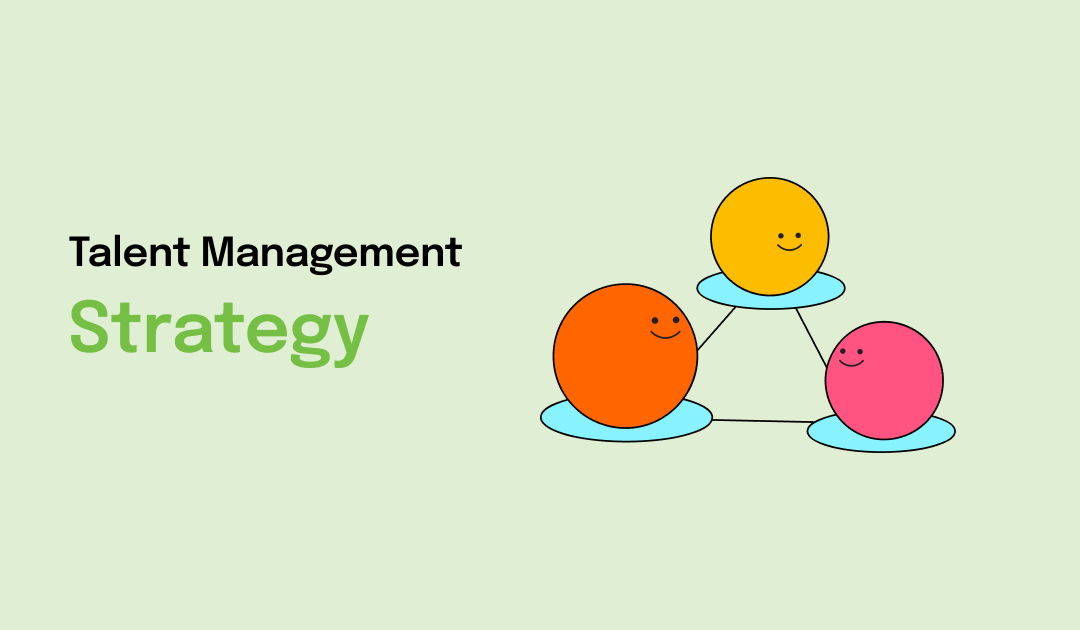A well-crafted Talent Management Strategy is essential for businesses aiming to attract, develop, and retain top talent. By aligning HR practices with business goals, companies can boost employee engagement and drive overall success. In today’s competitive market, implementing strategic talent management is not just an option — it’s a necessity for sustainable growth.
Developing an Effective Talent Management Strategy involves more than just hiring; it’s about creating a comprehensive plan that covers recruitment, onboarding, performance management, and succession planning. This approach ensures that businesses have the right people in the right roles, helping to optimize productivity and reduce turnover. With a focus on Talent Development and Retention Strategies, companies can build a resilient workforce prepared to meet future challenges.
In this guide, we’ll explore best practices in talent strategy, helping you create a robust plan that supports your organizational goals and fosters a positive employee experience.
What is a Talent Management Strategy?
Table of Contents
A Talent Management Strategy is not just about filling positions; it’s about building a workforce that aligns with your company’s vision and goals. It includes a holistic approach that covers everything from recruiting the right people to developing them into leaders who can drive the organization forward. By being strategic regarding talent management, companies can ensure they have the talent needed to remain competitive in the market.
For example, during periods of rapid growth or economic change, having a strategic approach to talent can mean the difference between thriving and struggling. Organizations that invest in talent development and retention efforts are better positioned to adapt to challenges, retain top talent, and maintain high levels of performance. This approach includes personalized career development, fostering a positive work environment, and aligning employees’ goals with the company’s strategic objectives.
Key Objectives of a Talent Management Strategy:
- Enhance Employee Engagement and Productivity: Motivated employees perform better, contributing directly to business outcomes.
-
Align Talent Practices with Business Goals: Ensures that every hire, promotion, and development initiative supports the company’s strategic plan.
- Develop Future Leaders: Proactively identifies potential leaders and provides them with the tools and opportunities needed to grow.
- Improve Retention Rates: Reduces turnover by creating a work environment that employees do not want to leave.
Key Components of a Talent Management Strategy
To build a successful Talent Management Strategy, it’s crucial to focus on specific components that together create a comprehensive talent framework. Here’s an in-depth look at each key component:
- Talent Acquisition and Recruitment
- Objective: Attract high-quality candidates who fit your company’s culture and are capable of driving its vision forward.
- Best Practices: Leverage modern recruiting techniques like employer branding, targeted job advertisements, and candidate engagement through social media. Use data-driven insights to optimize your recruitment funnel and reduce time-to-hire.
- Example: Companies like Google use structured interviews and data analysis to ensure that new hires fit both the role and the company culture.
- Onboarding
- Objective: Seamlessly integrate new hires into the organization, setting them up for success from day one.
- Best Practices: Develop structured onboarding programs that introduce new employees to the company’s culture, values, and expectations. Provide ongoing support through mentorship and feedback mechanisms.
- Example: Zappos, known for its unique culture, uses a four-week onboarding program to immerse new hires fully into its customer-centric values, which boosts early engagement and retention.
- Performance Management
- Objective: Continuously manage employee performance to ensure alignment with business objectives.
- Best Practices: Implement performance management systems that include goal-setting, continuous feedback, and regular performance reviews. Encourage managers to have open, honest discussions with their teams.
- Example: Adobe replaced annual performance reviews with regular check-ins, leading to a 30% reduction in voluntary turnover.
- Employee Engagement
- Objective: Create a work environment that keeps employees motivated, satisfied, and connected to the company’s mission.
- Best Practices: Foster an inclusive workplace culture, recognize achievements, and provide opportunities for employees to voice their opinions.
- Example: Microsoft uses employee engagement surveys to gauge satisfaction and implement feedback-driven changes that keep their workforce engaged.
- Learning and Development
- Objective: Equip employees with the necessary skills and knowledge to grow within the company.
- Best Practices: Offer diverse training options, including workshops, e-learning, and coaching. Encourage continuous learning and career advancement through personalized development plans.
- Example: IBM invests heavily in reskilling its workforce, with over 4,000 courses available to employees, fostering a culture of continuous learning.
- Succession Planning
- Objective: Ensure business continuity by preparing for key leadership changes and skill gaps.
- Best Practices: Identify critical roles and potential successors early. Develop talent through rotational programs, leadership training, and mentorship.
- Example: Procter & Gamble is renowned for its succession planning, with a strong internal pipeline that prepares future leaders for top roles.
Why is a Talent Management Strategy Important?
Developing and maintaining a comprehensive Talent Management Strategy is fundamental for organizations aiming to achieve long-term success. By integrating talent management into the company’s strategic plan, businesses can anticipate future needs and proactively develop their workforce to meet those needs.
Key Benefits:
- Improved Retention: Engaged and developed employees are more likely to stay, reducing turnover costs and ensuring continuity in critical roles.
- Enhanced Performance: By aligning talent management with business goals, employees are better positioned to perform at their highest levels.
- Increased Adaptability: A well-managed talent pool allows organizations to pivot quickly in response to market changes or new opportunities.
- Future-Proofing Leadership: Succession planning ensures that leadership roles are filled with qualified individuals ready to take on new challenges.
Best Practices for Developing a Talent Management Strategy
Building a sustainable and effective Talent Management Strategy requires careful planning and a deep understanding of the organization’s strategic objectives. Here are some best practices to consider:
- Align with Business Strategy
- Start by understanding the company’s strategic goals. Your talent management initiatives should directly support these goals, ensuring that the workforce is aligned with what the business needs to succeed.
- Support Learning and Development
- Invest in employee training and development programs that cater to diverse learning needs. This not only enhances skills but also boosts morale and engagement.
- Personalize Employee Experiences
- Recognize the individuality of your employees. Tailor engagement, development, and career progression plans to suit their unique needs and aspirations.
- Leverage Data and Technology
- Utilize talent management software and analytics to gain insights into employee performance, identify skill gaps, and make data-driven decisions that improve overall strategy.
- Measure Strategy Effectiveness
- Regularly assess the impact of your talent management practices. Use metrics such as turnover rates, employee engagement scores, and productivity levels to refine your approach continuously.
Actionable Steps to Build a High-Impact Talent Management Strategy
Here’s a step-by-step roadmap:
- Define business goals and align talent priorities.
- Conduct organizational and individual training needs analysis.
- Create personas and development journeys for key roles.
- Map learning interventions to key talent goals.
- Track metrics like retention, engagement, performance shifts.
- Adapt and evolve your talent strategy quarterly.
From Our Experience: Common Mistakes to Avoid
- Assuming one-size-fits-all training works.
- Ignoring the role of line managers in talent development.
- Treating L&D as a cost center instead of a growth driver.
- Focusing only on high potentials and ignoring the rest.
- Over-reliance on certifications instead of real-world capability building.
Learning & Development Takeaway
A strong Talent Management Strategy is essential for businesses looking to thrive in today’s dynamic environment. By focusing on key components like recruitment, development, and engagement, and aligning these efforts with strategic business objectives, organizations can build a sustainable and high-performing workforce.
In our experience, a successful talent management strategy is not built in isolation. It involves integrating learning, performance, culture, and leadership into a single seamless experience. It means thinking long-term, measuring effectiveness, and co-owning talent outcomes with business leaders.
If you’re looking to develop talent strategies that truly make a difference—start by listening to your people, connecting learning to work, and enabling growth at every stage.










